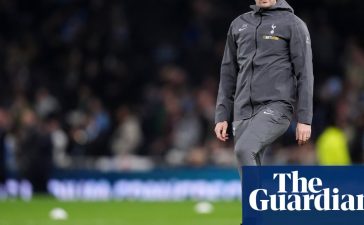
Electrovaya Inc. (EFL.TO) has reported a significant year-over-year revenue increase of 26% in its second quarter of 2024, with figures reaching $10.7 million. The company announced improvements in profitability, with gross margins climbing to 34.8% and adjusted EBITDA hitting $1.5 million.
A key supply agreement with Sumitomo Corporation Power & Mobility signifies Electrovaya’s expansion into the Japanese market. Looking forward, Electrovaya anticipates accelerated revenue growth in the latter half of the fiscal year and into the following year, maintaining revenue guidance between $65 million and $75 million.
Key Takeaways
- Electrovaya’s Q2 revenue rose to $10.7 million, a 26% increase year-over-year.
- Gross margin improved to 34.8%, with adjusted EBITDA reaching $1.5 million.
- The company secured a supply agreement with Sumitomo Corporation Power & Mobility, marking its expansion into Japan.
- Electrovaya expects revenue growth to pick up in the second half of the fiscal year.
- The company is focusing on reducing capital costs and is seeking financing for its Jamestown, NY expansion.
Company Outlook
- Electrovaya maintains a revenue forecast of $65 million to $75 million for the fiscal year.
- The company is actively seeking financing for expanding its manufacturing and assembly in Jamestown, NY.
- A purchase order backlog of over $43 million supports anticipated growth.
- Electrovaya is exploring opportunities in multiple sectors, including defense, mining, and hybrid trucking.
Bearish Highlights
- The company faces risks in meeting its revenue projections due to potential delays in customer distribution center sites.
- Delays in the bus market are attributed to subsidy issues and a lack of natural demand.
Bullish Highlights
- Positive cash flow from operating activities was reported at $0.4 million.
- The company is pursuing opportunities to automate production and improve margins through efficiency.
- Promising developments in solid-state battery technology are underway.
remove ads
.
Misses
- Total debt slightly increased to $18 million from $17.2 million in the previous year.
- There are concerns about meeting the upper end of revenue projections due to potential delays.
Q&A Highlights
- Electrovaya is in discussions with government-backed lenders for the Jamestown facility expansion.
- The company is working on next-generation electric buses, but volumes are delayed due to R&D programs with two bus OEMs.
- Solid-state battery development is progressing, though it’s too early to confirm if cycle life targets have been met.
Electrovaya’s Q2 2024 financial results demonstrate a company on the rise, with significant revenue growth and strategic expansion plans. The company’s focus on profitability and cost control, coupled with its innovative approach to product development in various sectors, positions it well for future growth. Despite some challenges in the bus market and the need to secure financing for expansion, Electrovaya’s outlook remains positive as it continues to develop its presence in the global market for heavy-duty lithium-ion batteries. The next earnings report in the third quarter of 2024 is highly anticipated for further insights into the company’s performance and strategic directions.
InvestingPro Insights
Electrovaya Inc.’s recent financial performance shows a promising trajectory, with a notable increase in revenue and profitability. To further understand the company’s financial health and market position, let’s consider some key metrics and insights from InvestingPro.
InvestingPro Data:
- The company’s market capitalization stands at $115.37M, indicating a relatively small but potentially agile player in the industry.
- Electrovaya is trading at a high Price / Book multiple of 15.36, which suggests the market is valuing the company’s assets quite richly compared to its current book value.
remove ads
.
- Revenue growth over the last twelve months has been impressive, at 101.8%, which aligns with the company’s reported year-over-year revenue increase and supports expectations for continued growth.
InvestingPro Tips:
- Analysts are optimistic about Electrovaya’s future, anticipating sales growth in the current year. This aligns with the company’s own revenue guidance and its strategic expansion into the Japanese market through the Sumitomo Corporation Power & Mobility agreement.
- Despite the optimism, it’s important to note that Electrovaya operates with a significant debt burden, which could impact its financial flexibility. The rise in total debt to $18 million from $17.2 million in the previous year is a point of attention for investors.
For investors seeking a more comprehensive analysis, there are additional InvestingPro Tips available, which can provide deeper insights into Electrovaya’s financials and market potential. Remember to use the coupon code PRONEWS24 to get an additional 10% off a yearly or biyearly Pro and Pro+ subscription at InvestingPro. There are 13 more InvestingPro Tips listed for Electrovaya, which can help investors make more informed decisions.
Full transcript – Electrovaya NAQ (ELVA) Q2 2024:
Operator: Greetings. Welcome to the Electrovaya Q2 2024 Financial Results Conference Call. At this time, all participants are in a listen-only mode. A question-and-answer session will follow the formal presentation. [Operator Instructions] Please note this conference is being recorded. I will now turn the conference over to your host, John Gibson, CFO. You may begin.
John Gibson: Thank you. Good morning, everyone, and thank you for joining today’s call to discuss Electrovaya’s Q2 2024 financial results. Today’s call is being hosted by Dr. Raj Das Gupta, CEO of Electrovaya; and myself, John Gibson, CFO. Today, Electrovaya issued a press release concerning its business highlights and financial results for the three and six month period ended March 31, 2024. If you would like a copy of the release, you can access it on our website. If you want to view our financial statements and management discussion and analysis, you can access those documents on SEDAR+ website at www.sedarplus.ca or on the SEC EDGAR website at sec.gov/EDGAR. As with previous calls, our comments today are subject to the normal provisions related to forward-looking information. We will provide information relating to our current views regarding market trends, including the size and potential for growth, and our competitive position within those target markets. Although, we believe that the expectations reflected in such forward-looking statements are reasonable, they do involve risks and uncertainties, and actual results may differ materially from those expressed or implied in such statements. Additional information about factors that could cause actual results to differ materially from expectations, and about material factors or assumptions applied in making forward-looking statements may be found in the company’s press release announcing its Q2 2024 results and the most recent annual information form and management discussion and analysis under risks and uncertainties, as well as in other public disclosure documents filed with the Canadian Securities Regulatory Authorities and the U.S. Security Regulatory Authorities. Also, please note that all numbers discussed on the call are in U.S. dollars, unless otherwise noted. And now, I’d like to turn the call over to Raj.
remove ads
.
Rajshekar DasGupta: Thank you, John, and good morning, everyone. Thank you for joining our fiscal Q2 2024 call. Electrovaya continues to make great strides in strengthening our business, including a new supply agreement with Sumitomo Corporation Power & Mobility, or SCPM, improved non-dilutive working capital availability and progress with regards to technology development and cost optimizations. We delivered significant improvement in profitability and margins, despite less revenue growth than anticipated due to delays driven solely by our customers’ delivery schedules shifting. In our business, there can be uncertainty with respect to delivery dates of our battery systems as customer sites are often newly constructed and they are thus subject to potential delays. Broader foundations are now in place to ensure continued and stronger financial performance going forward. We continue to see increasing reception of our products from major Fortune 100 customers. We expect our revenue growth to accelerate in the second half of this fiscal year and into our next fiscal year. While our revenue continued to demonstrate growth year-over-year, the most important area of financial progress is with our gross margins and overall profitability. Our gross margins increased to 35%, and this helped support growth in our adjusted EBITDA to about $1.5 million and an operating profit of $700,000. In the current era of high interest rates, profitability is paramount, and we are firmly focused on increasing our margins and ensuring our working capital is spent effectively. During the quarter, we increased our working capital facility from $16 million to $22 million, with accordions in place to go to $26 million. This increase in working capital is important to support a growing business size. Currently, we are actively focused on reducing our cost of capital. And I believe with our strong trailing EBITDA figures and a good projection going forward, Electrovaya is in a position to have Tier 1 bank lending at more reasonable interest rates. We are actively in discussions with several banks and are optimistic about completing a refinancing this fiscal year. I’d like to reflect on a few of the key milestones we achieved over the quarter and our vision going forward. First, we signed a key supply agreement with Sumitomo Corporation Power & Mobility, a 100% subsidiary of Sumitomo Corporation. This relationship has been growing over the past 12 months and together we have closed our first supply agreement with a leading Japanese construction equipment OEM. This OEM, who has major operations in both North America and Europe, will need volume deliveries of batteries to Japanese manufacturing sites starting in 2026. This is significant, as overall there have been very few, if any, North American battery companies with exports to Japan. It doesn’t stop there. We are also in discussions with multiple other OEMs in the construction, equipment, and mining industries with Sumitomo. Our relationship with Sumitomo opens many doors from sales to finance support. And this relationship is going to be one of the central aspects of our strategy to expand our geographic and application diversification. Secondly, our core market, the material handling industry, remains robust and is where we have the strongest set of end customers and OEM partners in the industry. Our backlog remains robust and growing despite economic and interest rate headwinds and we have a good line of sight with regards to demand for the foreseeable future, including into fiscal 2025. This strong base provides us with the platform for growth while enabling the company to spend a greater share of its resources on product development and research and development. We have continued to make traction with existing Fortune 100 and Fortune 500 companies while also adding additional enterprises in a seed stage. Furthermore, Electrovaya continues with our OEM partners on next generation electrified platforms and other improvements in our offerings which we will expect to generate further increased interest in our products, especially in late fiscal 2025 and onwards. We’ve also worked with our partners to provide the longest warranty in the industry, a testament to the cycle life and quality of our battery systems. This recent update will likely lead to higher levels of adoption, especially with regards to least battery systems. Our first Infinity Battery systems for material handling were deployed at Mondelez (NASDAQ:) in 2017 and then at Walmart (NYSE:) in 2018. And they are all still in operation, outlasting the vehicles they were originally installed in. These are some of the reasons Electrovaya can continue to generate high and growing margins from our products. We simply have the best product offering in the market. Thirdly, our product development efforts are moving forward. Our high voltage battery systems launched last year are continuing to be tested with initial customers with positive feedback. Given our battery technology’s ability to sustain higher levels of safety, cycle life, and overall performance than typical lithium-ion battery systems, we are seeing certain applications where we stand out even further, and thus can continue to garner the premium we have established in the material handling industry. Some verticals that are particularly interesting are defense, mining, and hybrid applications, and we are engaged in multiple opportunities with each. Importantly, these are applications where we sell on performance and are not dependent on government incentives, which are unpredictable and subject to change. With the overall electrification rates for bus and truck applications have been less than anticipated, and this can be seen directly from the results of some of our peers who have targeted these markets, whether they be battery companies or electric vehicle companies. One thing that we have continued to focus on are applications that sell on their own merit and are not dependent on government subsidies. The material handling market is a good example of this, and so are the other verticals I mentioned. Our customers purchase our products purely based on the return on investment that they obtain from operational and lifecycle cost efficiency. If a new subsidy becomes available or is canceled, we are immune. I believe this is especially important given the uncertainty of our political and geopolitical landscape. Despite this, we remain confident that our technology will be utilized in the all-electric bus and truck markets. We have started two research and development programs with two major bus OEMs. In the hybrid truck market segment, we are very well-positioned and we are actively in discussions on some projects. Our solid-state battery research efforts have reached some key milestones, and we plan on announcing our progress at the company’s Battery Technology event on June 12. Finally, we continue to make progress towards securing financing for investment in our project to expand manufacturing and sell assembly in Jamestown, New York. As mentioned previously, we anticipate the financing will have a government backed component, which requires a higher level of due diligence on the part of the lenders. This is still progressing, but has been slower than we anticipated. That said, given improvements in supply chain and operations at our current facilities, we will not need the Jamestown output until 2026. With that, I’d like to pass the call back to John Gibson, who will go into the financial results in more detail.
remove ads
.
John Gibson: Thanks, Raj. To start, I’d like to explain the reason for filing of the quarter with a notice to reader. The reviewer work for Q2 is essentially complete. However, we discovered a currency translation difference relating to the 2022 equity balances. This obviously has a cascading effect through the equity opening balances. The adjustment has no impact on the income statement for the current year and is solely an opening balance issue. We expect to complete the analysis and the review shortly. We continue the momentum from fiscal year 2023 and the December quarter into the first quarter, and that is emphasized by some of the significant improvements we have made. Revenue for Q2 was $10.7 million compared to a restated $8.5 million for Q2 fiscal 2023, an increase of 26% year-over-year. While this is not as high as we would have liked due to some products being pushed out of the quarter, we made substantial headway in terms of profitability, further emphasizing the operational transformation of the company in general. Gross margins increased by 1,240 basis points to 34.8%, with a significant growth in the gross margin for battery systems. Importantly, our adjusted EBITDA grew by $1.7 million to a positive $1.5 million for the quarter, giving us an EBITDA percentage of 14%. This is impressive off a relatively low quarter revenue rate, and provides us confidence of continued improvement of EBITDA going forward. As of the end of this quarter, our trailing 12 month EBITDA was $5.75 million, with an operating profit of $0.7 million compared to an operating loss of $0.6 million in the prior year. We expect to continue this trend throughout the rest of the fiscal year. Our overall net loss for the quarter was $0.8 million, a decrease of $0.5 million from the prior year. As you will see from the income statement, the finance cost had a substantial impact on this number. The company had positive cash flow provided from operating activities of $0.4 million compared to cash used in operating activities of $2.4 million in the prior year. As of March 31, 2024, total debt was $18 million compared to $17.2 million in the prior year. The company continues to manage our cash conservatively. With the additional space we have in a revolving facility that Raj mentioned, we believe we have adequate liquidity to support our anticipated growth to fiscal year 2024 and beyond. That concludes the financial review. I’d like to turn the call over to Raj for concluding remarks.
remove ads
.
Rajshekar DasGupta: Thank you, John. Electrovaya continues to demonstrate a nose to the ground mentality, that has led us to providing continued non-dilutive growth with a focus on the bottom line. We recognize we are still operating with a high cost of capital and will remain focused on our profitability, which I believe has made the company compelling for most banks. Our technology is truly exciting. While the material handling market remains our core market, I believe this is just the first innings as there are many applications where the Infinity Battery technology is an industry beater (ph). It just takes time and effort to ensure this is completed at the highest standard. With regards to our revenue projections for the remainder of the fiscal year, we have decided to stand by our previous guidance of $65 million to $75 million. There are some risks of meeting this range. Approximately $20 million of this anticipated revenue is dependent on customers’ new distribution center sites. Any delays on the startups of these sites may lead to a proportion of revenue moving into the subsequent fiscal year. We expect to have further clarity on the firm delivery dates of these sites over the next several months. The annual revenue forecast takes into consideration revenue from already delivered orders. The company’s current purchase order backlog, which is of May 13, 2024 is over $43 million. In addition to anticipated new orders based on historical patterns and additional demand communicated to the company, but not yet provided as a purchase order. This guidance is subject to change and is made bearing unforeseen circumstances. We continue to see increasing demand for our products in fiscal 2025, and I expect that that year will represent a significant ramp up in deliveries, margins, and profitability. Electrovaya is focused on continuing our great progress with regards to profitability and setting the company up for its long-term goal to be a globally dominant force for heavy duty lithium-ion batteries. That concludes our remarks this evening. John and I would now be pleased to hold any questions-and-answers.
remove ads
.
Operator: Certainly. At this time, we will be conducting a question-and-answer session. [Operator Instructions] Your first question for today is from Eric Stine with Craig-Hallum.
Eric Stine: Hi, Raj and John. Good morning.
John Gibson: Hey, Eric.
Rajshekar DasGupta: Good morning.
Eric Stine: Hey. So maybe just starting on gross margins, great number, especially on the lower revenue number. I mean, maybe just some thoughts on, what went into this quarter, just trying to get a sense of any one-time items or things we should consider as we look at this going forward, presumably on higher revenues implied in your guidance?
John Gibson: Yeah. Good question, Eric. John here. No one-offs in the quarter. What we really saw this quarter was an increase in efficiency on the floor. So if you look back at our previous quarters, 2023, there’s probably a fair amount of labor under absorption that contributes to the lower margins there and maybe also some historical pricing. This year, very efficient on the floor. We are getting some economies of scale with purchasing volumes. But nothing that one-off that would threw (ph) off the margins we — if you pull it out of the quarter. So from a kind of a trend going forward, this is what we expect to see. And really, it’s what we have always said for the last 12 months or so. We’re getting to this 35% magic number and we did it maybe a little bit earlier than we expected.
Rajshekar DasGupta: Yeah. Right. Eric, just to follow on that a little bit. I would expect as our revenue increases further, we are expecting further improvement to the gross margins. So this 35% number we were targeting probably a little bit later in the fiscal year, we’ve already hit it. It doesn’t stop there. There are further improvements we’re anticipating. And so our focus is very much on ensuring we have more money to the bottom line.
remove ads
.
Eric Stine: No. That’s great. And then just keeping with that line in the second half, I mean, clearly your guidance implies a pretty significant step up, but you’ve got visibility while there are still risks. And I guess, I’m curious what you’ve seen here early in 3Q, how that maybe adds to your confidence going forward as you think about it?
John Gibson: Yeah. Q3 started off very busy and it’ll continue very busy for the rest of the quarter. As we said, there’s always going to be a risk when you’re delivering products at greenfield site. A lot of these delays are obviously out with our control and a lot of times it’s out with the customer’s control as well. We’re going to build to our original purchase order dates, as Raj mentioned. We’ll continue to do that. And if we do that, then we’ll hit our guidance. That’s just a pair of the purchase orders that we have on hand. I mean, we have a strong backlog right now. So we’re going to continue to work until we’ve told otherwise.
Eric Stine: Okay. Maybe last one from me. Just good development there with Sumitomo. Just curious, I mean, obviously, spreading out to other applications, you’ve mentioned the one main OEM — Japanese OEM, that you’ve been selected by, but now talking about others. Maybe you could just talk about those others, what those other applications are, how potentially big those applications are, and other details.
Rajshekar DasGupta: Yeah. Great question, Eric. So, yeah, the first Japanese OEM that we signed up with Sumitomo is in the construction space. There are — there’s at least one other player also in the construction place which we’re in discussions with. However the — another big opportunity we see that we’re working on jointly with Sumitomo is in the mining sector. And the mining sector has a lot of commonality with the material handling business that we’re very familiar with. Essentially, these are vehicles very sensitive to downtime. They operate 23 hours a day. They are looking for the very best electrification in the market, and that’s what we can serve with our product line. So that’s one very good target market we’re looking at and we’re tackling that jointly with Sumitomo.
remove ads
.
Eric Stine: All right. Thank you.
Operator: Your next question is from Craig Irwin with ROTH Capital Markets.
Craig Irwin: Good morning. Congratulations on the strong EBITDA here, Raj. It’s an impressive quarter. I wanted to just talk to a little bit of pricing because, obviously you saw a pretty healthy margin mix this quarter and it seems like there’s more to go, so that’s exciting. Are you still pricing your products basically at parity on a kilowatt hour basis versus competitive product and not adjusting for the life cycle or are you, maybe starting to take a view that you can price these at a premium given you get 3 times the typical life of competing product?
Rajshekar DasGupta: Yeah. Thanks, Craig. I would say our products are definitely priced at a premium, and which is what we will continue to do because the demand for our products is substantial. And we’re providing our customers with a clear benefit. If you look at our customers, they’re the creme de la creme (ph) of the — of this industry, and they generally look for the best products, which gives them an operational benefit. So I don’t think our customers are that focused on the capital costs. They just want the best, which is what we provide. So I would say when we compare Electrovaya to some of our competitors, we would probably be selling our products at a higher margin and a higher price.
Craig Irwin: Yeah. The margins were higher, that’s for sure. So my second question is, you touched on the mining and construction opportunity through Sumitomo. But I’m going to guess there’s actually mining and construction and other industrial type opportunities you’ve been developing with many other customers out there. Can you maybe sketch out for us the amount of activity in these non-materials handling markets for Electrovaya? What do you see as the largest opportunity over the next couple of years and what do you see as your strengths allowing you to gain traction here?
remove ads
.
Rajshekar DasGupta: So in terms of the strengths, it is the same strength. So it’s the cycle life, the longevity, the safety, and just overall general performance, which we can beat most other battery companies with. And so when you pick that, you say, who’s going to like to use this technology? Defense is quite high up on that list. So we have a number of, I think, about four (ph) projects ongoing right now with various defense contractors, all at the sort of seed level at this point. But we see significant interest there. So that’s one sector which can continue to provide high margins. It’s all performance-based and one where our technology is a good fit. On the mining side, again, this is when we talked to a few mining companies. They are under pressure, of course, to reduce carbon footprint from their operations. But electrifying has always been a challenge because these vehicles are large. They operate 23 hours a day. They don’t want to have downtime. And so they’ve been looking for an electrification partner, which they — which we believe we are. So we’re talking to a number of players there. That takes a bit of time with regards to development, but it’s an extremely interesting and large market opportunity. So that’s one I’m very excited about. Construction, again, as we’re seeing the demand there from the construction space. Again, similar to the material handling, it’s got the heavy-duty component. And then there’s also the material handling as well, right? There’s a significant share of material handling which remains to be IC engine powered because it’s extremely heavy duty, it’s outdoors, it’s at ports, etc. And we’re seeing that space, especially in places like California, where they’re mandating to reduce emissions, we’re seeing our OEM partner launch product — prepare to launch products for these — for this demand. So it’s across all these sectors we’re seeing. And then there’s one more, which would be hybrid trucks, right? So long distance trucking, I think electrification is maybe a tricky proposition, but hybridizing those vehicles is not. And we see, again, in the long-term, a good opportunity for providing high-performance, high-rate batteries for hybrid long distance trucking.
remove ads
.
Craig Irwin: A bunch of exciting opportunities in there. So then Raj, I was hoping for a little bit more of an update on your Jamestown, New York facility. Can you maybe share with us what’s changed as far as the operational setup and how do you feel about the debt financing commitment for that facility? Is it something that’s possible that we get it this summer or should we wait given the sort of broader uncertainties out there? I mean, you’re constructive about your debt outlook. I like that. But the sort of fresh debt of this facility is what I’m interested in.
Rajshekar DasGupta: Yeah. On Jamestown, we have had multiple, in fact, we just received another term sheet from a private lender recently to fund this expansion. Our focus, though, is still to get are the financing at a lower cost from a government-backed lender, who we are in advanced discussions with and have been in advanced discussions with for some time. We see some light at the tunnel at this point, though. We have regular conversations with this group who’s out of D.C. I’ll be in D.C. in a couple weeks as well to meet with them. So I think, we’re making good progress, but we do have the alternatives on the private side as well, just at a higher cost.
Craig Irwin: Excellent. Then last question, if I may. Cost, your frictional expenses were incredibly well-controlled this quarter, flat year-over-year. Can you talk about how we should expect these to track with revenue over the next couple of quarters? I assume there is some leverage in the model. But what should we be thinking about frictional costs to support the ramp in the back half of your fiscal year?
remove ads
.
John Gibson: I don’t think — it’s John here. I don’t think you’re going to see a significant increase through the last two quarters of the year. What we — we’re trying to keep our overheads down, we’re trying to keep our costs down, we’re trying to be as efficient as possible to push as much profit to the bottom line. It’s — we’re not in a position and we don’t want to be in a position where we’re fruitlessly incurring cost for no reason. So we’re being very strategic with what we do. Keeping as lean as possible while also being efficient and hitting your targets and managing everyone’s expectations as a company.
Craig Irwin: Great. Well, congratulations on the progress. I’ll hop back in the queue. Thank you.
John Gibson: Thanks.
Operator: Your next question for today is from Amit Dayal with H.C. Wainwright.
Amit Dayal: Thank you and good morning, everyone. With respect to margins, going forward and expecting further improvements, is this primarily just coming from better pricing with the goods that are yet to be delivered or are there some other factors in play as well?
John Gibson: Yeah, Amit. We have some pricing improvements will be hitting the later half of the year and into fiscal 2025. But I think the most important thing we’ve done is we’ve really increased our efficiency going through the factory floor. So while we’ve got some economies of scale with our volumes, obviously when you buy more, you can negotiate a little bit more with your suppliers to push the price down. We’re also being very good with the timing of our purchases, analyzing the cost in the market, market trends in terms of where prices are going to go, and making educated decisions with a bit more purpose than we had done previously, where we were really just kind of looking at it from a just-in-time perspective or making sure we had the orders in with our customers without really analyzing when we need deliveries, etc. So we’re being a little bit more purposeful with how we manage the purchasing process and then just making sure that when things go onto the floor, they get through the floor as efficiently as possible. Spending as little time as needed, making sure that our labor absorption is where we’re over absorbed and not under absorbed to maximize that from an efficiency standpoint. And then going forward, there are going to be opportunities where we can automate parts of the production process, which would also improve efficiency and throughput for the factory, reducing time it takes for a battery to go from a bunch of screws and some cells to a fully working operational product. So that’s something that we’re looking at implementing probably the first half of fiscal 2025. So these kind of improvements that you’ll see going forward that will help to kind of solidify our ability to maintain margins and go from there.
remove ads
.
Amit Dayal: Thank you, John. Appreciate that. So we are now looking at maybe Jamestown coming into play in 2026. How does that sort of set you up for potential growth in revenues in 2025? Do you have enough capacity with the existing facilities to drive further growth from the guidance you provided for 2024 and 2025?
John Gibson: Absolutely. So we are — the way we’re kind of operating right now is for fiscal ’25, we don’t need Jamestown to increase our revenue output. We’re only running one shift here in Ontario, we can increase that. So we really can get up to our total capacity here for 2025 without the need for Jamestown. In terms of what you mentioned with Jamestown becoming operational in 2026, we are still planning on having it open essentially and go live mid-2025. But what we really want to say is that that process isn’t required for any revenue targets that we set for 2025. Everything can come out of Mississauga. So we want to make sure we’ve got Jamestown up and running so that when capacity does increase, it’s ready to go. But from a revenue perspective, everything will come out of Canada.
Amit Dayal: Understood. That’s very helpful. Thank you. Yeah. Good to hear that. With respect to some of the ongoing revenue diversification efforts in play, how should we expect the revenue mix in 2025 to change towards some of these new markets and applications you guys are working on? I mean, I believe the majority of the revenues today are material handling, but there are some interesting discussions you’re having with customers in new markets. With the visibility you have, how does that sort of change the revenue mix in 2025 if some of these discussions come to fruition?
remove ads
.
Rajshekar DasGupta: Yeah. 2025, as we’ve said all along, is still going to be dominated by material handling revenue. That said, there is a growing amount of other verticals in there, which are mostly will still be at the seed stage. Some of them moving into higher rates of production. For instance, the construction OEM I mentioned earlier in the call, we’re already seeding – we’re already shipping them sort of well, pre-production battery parts, and then it goes into mass production by 2026. So a lot of these programs will scale 2026 onwards.
Amit Dayal: Okay. Understood. That’s all I have, guys. Thank you so much.
Operator: Your next question is from Graham Price with Raymond James.
Graham Price: Hi. good morning. Thanks for taking the question. I saw that you provided a little teaser for the Analyst Day, an update on the solid-state battery development. Just wondering, obviously I’m sure you’ll save the details for the Analyst Day, but just what topics we should expect to be discussed and kind of frame — what kind of details will be provided that day?
Rajshekar DasGupta: Yeah. So as a solid-state battery, we’ve been very quiet about it for quite a period. About a year ago, we took a different — we changed some things in our research and development direction. Those changes have led to some positive outcomes. And one of the things we did was we started to make a proprietary ceramic ionically conducting material. And it’s getting — the idea was to make this in-house so that you could make the ceramic separator in-house at a better cost and more control. And using third-party materials, what we found is the material that we’re making in-house is significantly better than anything we can purchase. The separator is looking good. We’ve started actively reaching out to potential partners again after that hiatus. In fact, yesterday, we had a call with a major car company. And so we’ll go over more details at the Battery Technology Day, but I’m pleased to see the progress that the team has made at Electrovaya Labs.
remove ads
.
Graham Price: Got it. Great. Certainly, looking forward to that. For my follow-up, maybe related to some of the gross margin questions, we’ve obviously seen Asian battery cell and component pricing continuing to fall quite steeply. Just wondering if you’re seeing that from your suppliers and to what extent?
Rajshekar DasGupta: So we have seen some commodity prices drop, which definitely will affect us in a positive way. That has not yet been reflected in our sales to Rate, right? With our sales to date are still based on historical higher-priced commodities. I would expect the lower-priced commodity price to have an effect on our deliveries probably later this fiscal year, towards the end of this fiscal year. But definitely 2025 is where you’ll see the majority of that impact. So that’s
Graham Price: Got it. Understood. Thank you very much. I’ll jump aback in the queue.
Operator: Your next question for today is from Orin Hirschman with AIGH Investment Partners.
Orin Hirschman: Hi. Good morning. How are you? Yes. Thank you. In terms of the bus market and the delays, can you talk about the delays because of government subsidies or the delays because of technical performance on the buses that people can’t achieve? What do you think is causing the delays?
Rajshekar DasGupta: So we’ve been — we are working with two bus OEMs. Now, we were hopeful — we wanted to get into immediate production with them. And we are instead in an R&D program for their next generation vehicles, which is a good thing. I mean, it sets us up for volumes. It’s just those volumes will be later than we had initially hoped. That said, the bus segment overall is not as great a vertical as we had envisioned just one year or two years ago. If you look at the market, you’ll see a number of OEMs who are actually dropping out of the market entirely. There have been three in the last 12 months or so. And on the startup side, they’re generally all very shaky. And part of the reason for this is the — it’s on the demand side. The demand side, the cities aren’t purchasing these electric buses unless they’re having substantial subsidies to do so. It’s not a natural market at this point. And while the other verticals I’ve mentioned, they are natural markets for our products, so it’s less of — if someone else — if elections change, policies, things can change on a dime with regards to government procurements.
remove ads
.
Orin Hirschman: Got it. And without stealing anything, any of the show that you want to — I mean, last question kind of set a little bit of line in some of the progress in the solid state. There were two programs. One was a solid-state, one was liquid-solid. Are we talking — which program are we talking about? Are we talking about both? Have you decided to focus on one?
Rajshekar DasGupta: It’s a — it would be a solid-state battery. It’s got a ceramic ionically conducting separator. Of course, there potentially are some, what you define as a liquid can be a little bit vague, but there is a catholyte in there that we have developed as well. Probably very similar approach to what you would see from other groups like QuantumScape who have something probably in a similar direction.
Orin Hirschman: Just again, without stealing the thunder, the last update, the cycles — charge to source cycles, was so far away from a commercial product. Again, that update was a while ago, was a long while ago. Are you implying — again, without saying anything, say, right now, are you implying that we’ve seen significant progress because of some of the changes you’ve made in things like the ceramic doing it yourself?
Rajshekar DasGupta: Yeah. We’ve seen improvements. I mean, we were hitting a bit of a wall in the previous approach. And we have reapproached this with — I’m getting into too much technical detail, but we — I’ve seen — the results haven’t gotten far enough to confirm whether we’ve reached the cycle life targets, but definitely it’s — and that’s just because of the timing thing. We’ve — these new cells are relatively new. But I’m optimistic they will have the right performance.
remove ads
.
Orin Hirschman: Okay. Great. Thank you.
Operator: We have reached the end of the question-and-answer session, and now I’ll turn the call over to Raj for closing remarks.
Rajshekar DasGupta: Thanks, Holly. That concludes our call, and thank you for listening. We look forward to speaking with you again after we report our third quarter 2024 results. Have a wonderful morning.
Operator: This concludes today’s conference and you may disconnect your lines at this time. Thank you for your participation.
This article was generated with the support of AI and reviewed by an editor. For more information see our T&C.









